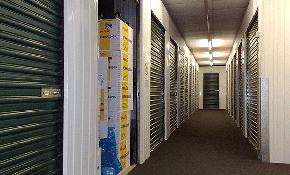 Ginsborg: “Throw in a recession and you have the perfect storm to create a redevelopment opportunity.”
Ginsborg: “Throw in a recession and you have the perfect storm to create a redevelopment opportunity.”
DENVER—In 2012, NewMark Merrill purchased a 50% vacant retail center for $8.5 million. Five years and $90 million of additional investment later, the new Village at the Peaks is the retail centerpiece of the community with Whole Foods, Sam’s Club and a Regal Cinemas movie theater among the anchor tenants at the 500,000-square-foot complex. To accomplish this success, NewMark Merrill forged partnerships with the city and the community to create a retail center curated to the tastes of Northern Colorado residents. For a closer look at this case study, we sat down with Allen Ginsborg, NewMark Merrill Mountain States managing director and principal for an exclusive interview. Here, he gives us an inside look at the making of Village at the Peaks.
GlobeSt.com: Why was this mall a good candidate for redevelopment?
Allen Ginsborg: This project was originally built in 1985 as the Twin Peaks Mall, and was anchored by Sears, Dillard’s, United Artist Theaters, Joslins Department Store and a JC Penney. Over time, JC Penney, Joslins and Sears relocated or closed their stores. At the same time, the old mall’s fashion-centric tenant mix was consumed by the development of new regional projects on the periphery of the mall’s trade area. The first was Flat Irons Mall, which was an enclosed regional mall, and then the redevelopment of open-air centers in Boulder, Westminster and Loveland. Several factors led to the demise of the old mall including the great recession, new competition and failure of the existing mall to carve out its market position in the face of that competition.
GlobeSt.com: What are some of the characteristics that you look for in a redevelopment opportunity like this?
Ginsborg: First and foremost, if the cost basis isn’t right, you can’t truly recreate anything. The project cost has to be low enough to allow for a return on the enormous amount of new investment required to completely overhaul and reformat a property. A high cost basis restricts your creativity to low-cost band aids and cosmetic fixes to see if simple re-tenanting efforts can improve the sales of the merchants to generate higher occupancy and rents to create return on investment. In this case, as new competition intervened, it eliminated much of the apparel demand the old mall catered to, creating increased vacancy that reduced income. Throw in a recession and you have the perfect storm to create a redevelopment opportunity. But in good times or bad, we’re always very careful to be sure the cost basis of our project is low enough to deal with all the surprises that pop up during a redevelopment.
Another key to a successful redevelopment is engaging the community early, personally and often. I held more than two dozen community meetings with a couple of thousand stakeholders to develop and refine what people in the community said they wanted. Then I tested our vision using community-wide polling and opinion surveys to be sure we were on track and to educate and build public consensus about the market and tenant demand. I always want the majority of the community to be my partner in our projects. I can’t fight the battle to attract retailers and deal with the rising costs, and have the community fighting me along the way too. That’s a losing hand.
GlobeSt.com: What was your vision for the Longmont project?
Ginsborg: Overall, we saw an opportunity to create a place where Longmont could distinguish itself from its glitzy Boulder neighbor. The more time I spent in Longmont, the more I realized residents wanted their own identity rather than being seen as the stepchild of Boulder. They wanted to shop, be entertained and dine in their town. Our vision to create a space where Longmonters could celebrate their community in an authentically local way was the natural outcome of our in-depth research. With this clear vision, we set out to attract the merchandising mix and destination uses to create a uniquely experiential place and space for Boulder County to gather and to celebrate the Colorado lifestyle. We borrowed architectural themes from nearby Rocky Mountain Park; preserved spectacular vistas to the snowcapped peaks; incorporated over 100 tons of natural boulders into our landscaping; and built a massive water fall feature in addition to many other amenities.
GlobeSt.com: Tenant mix is becoming increasingly important in retail. How important was the tenant mix to this project?
Ginsborg: When I started in the industry in 1983, tenant mix in open air centers was not even an afterthought. Today, it’s what I think about most often and enjoy creating the best. Years ago, all that mattered was the consumer’s ease of making a purchase. Today, what goes on outside the store is almost as important as what goes on inside it. We have to give people a reason to visit our projects that has nothing to do with the immediate need to buy something, which is what the internet is for. Our Village must be a place where residents create good lasting memories and know that they will continue to find fun and exciting things to do while they shop, eat or see a movie. We have held events in our open-air shopping centers for decades, which is something that is just now becoming common. That’s one ingredient to my partner Sandy Sigal’s secret sauce and it is catching on everywhere now.
GlobeSt.com: You partnered with the city on this project. Why was that partnership important to the success of the project?
Ginsborg: We bought this property in February 2012, which means that we had to tee it up in 2011, while we were still in the depths of a recession, particularly in retailing. As we came out of the recession, we knew costs were increasing but they went up more rapidly than anyone could have anticipated. Somewhere in the realm of 10% to 15% a year, and at the same time retail sales were still falling or best case flat. Without the city assistance and a bond issuance, there is no way we could have built this project financially. We also ended up needing the City Urban Renewal Authority to condemn covenants Dillard’s had against the property that had prevented it from being redeveloped in the past.
GlobeSt.com: Give me an update on the project today, and how much value you have created post redevelopment?
Ginsborg: Village at the Peaks is still a work in progress, but so far many of our merchants have had record openings and we’re almost 95% leased. Over 8,000 people participated in our grand opening events, and another 10,000 have participated in our concert series, kid’s clubs, back to school weekend and other activities over the past seven months.
GlobeSt.com: What is next for the project? What is your long-term business plan?
Ginsborg: Now that construction is almost done and we are well leased I get to have fun programming cool events, helping the community and finding the next wave of great merchants to anchor our second and final phase of the project totaling about 50,000 square feet. We are partnering with several great local charities and have already raised over $75,000 for them in a seven-month cycle. We are looking at starting a regional road bike race and are working closely with the school district to improve local schools. We love to operate our projects to test out new ideas and to continue creating fresh exciting experiences for our merchants and communities as we seek new projects.

















 Copyright © 2024 ALM Global, LLC. All Rights Reserved.
Copyright © 2024 ALM Global, LLC. All Rights Reserved.